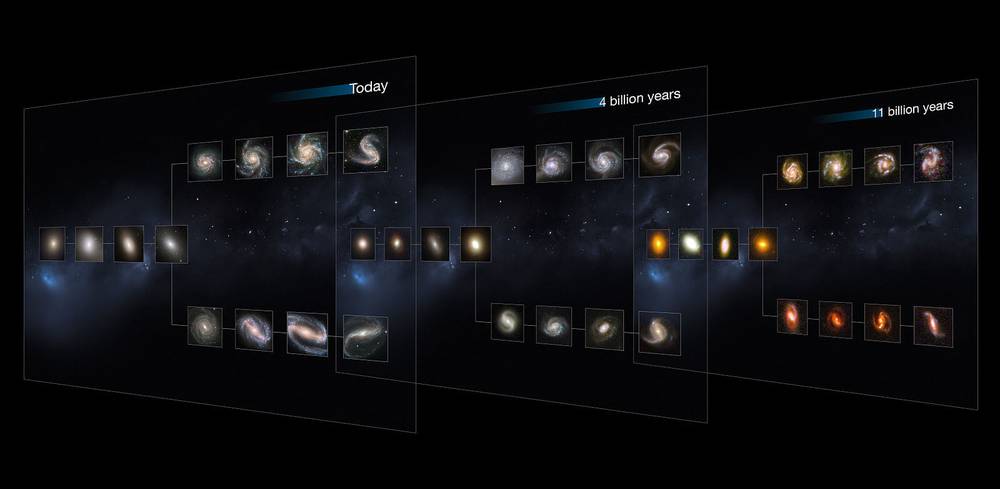This image shows "slices" of the Universe at different times throughout its history (present day, and at 4 and 11 billion years ago). Image © Wikimedia Commons
First, let us start from what is a galaxy?
A galaxy is a gravitationally bound huge collection of gas, dust, billions of stars, solar systems, and black holes just like a black hole at the center of our Milky Way galaxy, known as Sagittarius A*. In this vast universe, galaxies range in size from dwarfs with just a few hundred million (108) stars to giants with one hundred trillion (1014) stars.
There are almost trillions of such a gravitationally bound system out there. To be exact, by a study of 2016, there are almost 2 trillion galaxies just in the observable universe. Now imagine how far is the unobserved universe and how many galaxies it may contain. Imagine how far the universe still remains to explore!
Classification of Galaxies
The current classification of galaxies roots back to the initial scheme proposed by the American astronomer Edwin Hubble in 1926. Under that initial scheme Hubble classified galaxies based on the optical appearance of galaxy images on photographic plates.
Though widely followed by scientific community, Hubble’s classification is not the one and only galaxy classification. W.W. Morgan suggested a classification scheme which is based on the relative contributions of light from population types to the total light.
In the Hubble’s initial scheme, also known as ‘tuning fork’, which is based on the optical appearance of galaxy images on photographic plates, galaxies are divided into four general classes: ellipticals, spirals, irregular, and barred spirals (barred spiral comes under spiral classification, so in many places, it is not designated as a separate classification).
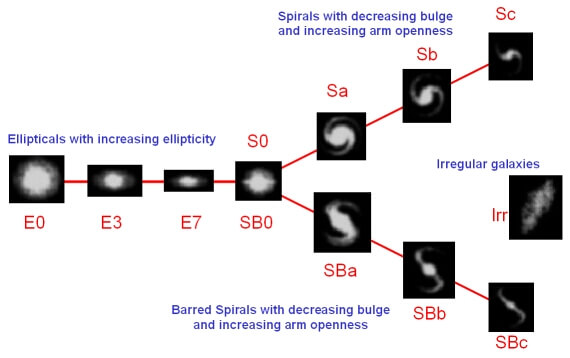
Many important characteristics of the galaxies viz. their population characteristics and their structural features are inherent in their classification. Thus, the elliptical galaxies may be characterized by primarily the old stars, the spirals by both old (found in the disc and the halo), and the young stars (in the spiral arm) and the irregular Irr I galaxies by a much higher proportion of young stars.
Let us now move into the particular classification of galaxies in detail.
Elliptical Galaxies
During the Hubble’s classification of galaxies, Hubble noted, through the observation, that some galaxies appear slightly elliptical in shape and some to be nearly circular. Hubble named those as elliptical galaxies. In addition to elliptical in shape, these galaxies have certain other peculiar characteristics such as; they have complete rotational symmetry, they have a third smaller axis that is the presumed axis of rotation, they do not contain interstellar dust nor the bright stars of spectral types O and B, not spiral in structure, and the surface brightness of ellipticals at optical wavelengths decreases monotonically outward from a maximum value at the centre. The optical wavelength follows a common mathematical law of the form:
I = I0( r/a +1 )−2,
where I is the intensity of the light, I0 is the central intensity, r is the radius, and a is a scale factor.
These galaxies are red in color, and studying their spectra indicate that their light comes mostly from old stars, especially evolved red giants. These galaxies contain primarily old, red, population II stars.
Sub-classification of Elliptical Galaxies
Hubble sub-divide elliptical galaxies further into eight categories (E0, E1, E2, E3, E4, E5, E6, E7), depending on their ellipticity, where the ellipticity is given by
E = 10 x (1 – b/a)
Where a = semi-major axis and b = semi-minor axis of the ellipse.

Depending on how flat they are (ellipticity), elliptical galaxies are sub-divided from number ‘0’ to ‘7’ indicating the increasing degree of flatness. For instance, E0 appears to be almost perfect circles (remember, a circle is an ellipse), while those listed as E7 seem much longer than they are wide.
In the above formula, b/a = 1 for E0 and b/a = 3/10 for E7 and other values lying in between.
The flattened shape of an elliptical galaxy is not due to rotational flattening but to how the orbits are oriented and the distribution of the star velocities; the shape for the galaxy is determined by the speed of the stars in each direction.
The masses and luminosity of elliptical galaxies vary. Giant elliptical galaxies can be 1013 times as bright as our Sun and contain up to 1013 solar masses of stars and stuff while the dwarf ellipticals can be 105 times as bright as the Sun and contain less than 107 solar masses of stars.
Here, by theory, giant elliptical galaxies are generally thought to be the result of galaxy mergers whereas the ordinary elliptical galaxies may also form in this manner, or may have formed from the gravitational collapse of an interstellar gas cloud.
Some examples of an elliptical galaxy are M32, M87, Messier 110, and Leo I.
Spiral Galaxy
Spiral galaxy is the most common galaxy types in the universe: about 77% of the observed galaxies in the universe are spiral galaxies. As the name suggests spiral galaxy looks like spirals, with long arms winding toward a bright bulge at the center. A typical spiral galaxy comprises a nucleus, a disc, a corona or halo, and spiral arms. The bulge (nuclear bulge/nucleus) is a spherical structure found in the center of the galaxy and this region feature mostly contains older stars. The disk in a spiral galaxy is made up of dust, gas, and younger stars and it forms the arm structures. The halo of a galaxy is a loose, spherical structure located around the bulge and some of the disk. The halo contains old clusters of stars, known as globular clusters.
Related: What Process Creates and Maintains the Spiral Arms Around Spiral Galaxies?
The central nucleus and the corona mainly contain Population II stars whereas the spiral arms contain Population I stars including interstellar material, luminous supergiants, and young stars.
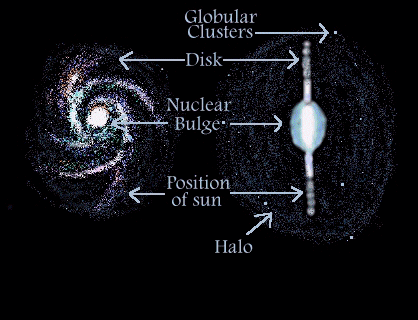
If you can clearly see the spiral shape, the galaxy is called a face-on spiral, and if you see the galaxy from the side, it is called an edge-on spiral.
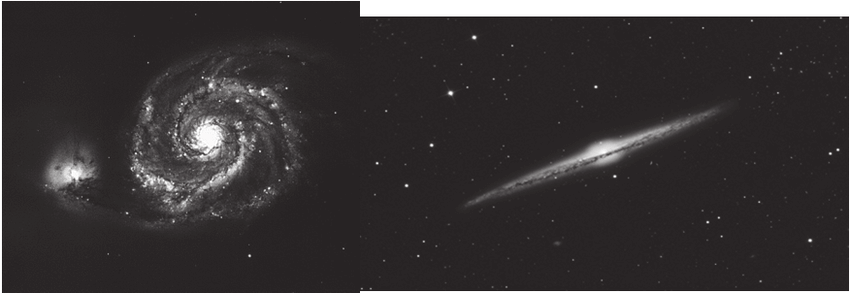
Some spiral galaxies have a bright line, or bar, running through their central nucleus. These are called barred spiral galaxies. Galaxies without a bar are simply called spiral galaxies. For instance, the Milky Way is a barred spiral galaxy. Another barred spiral galaxy is NGC 4394, shown below.
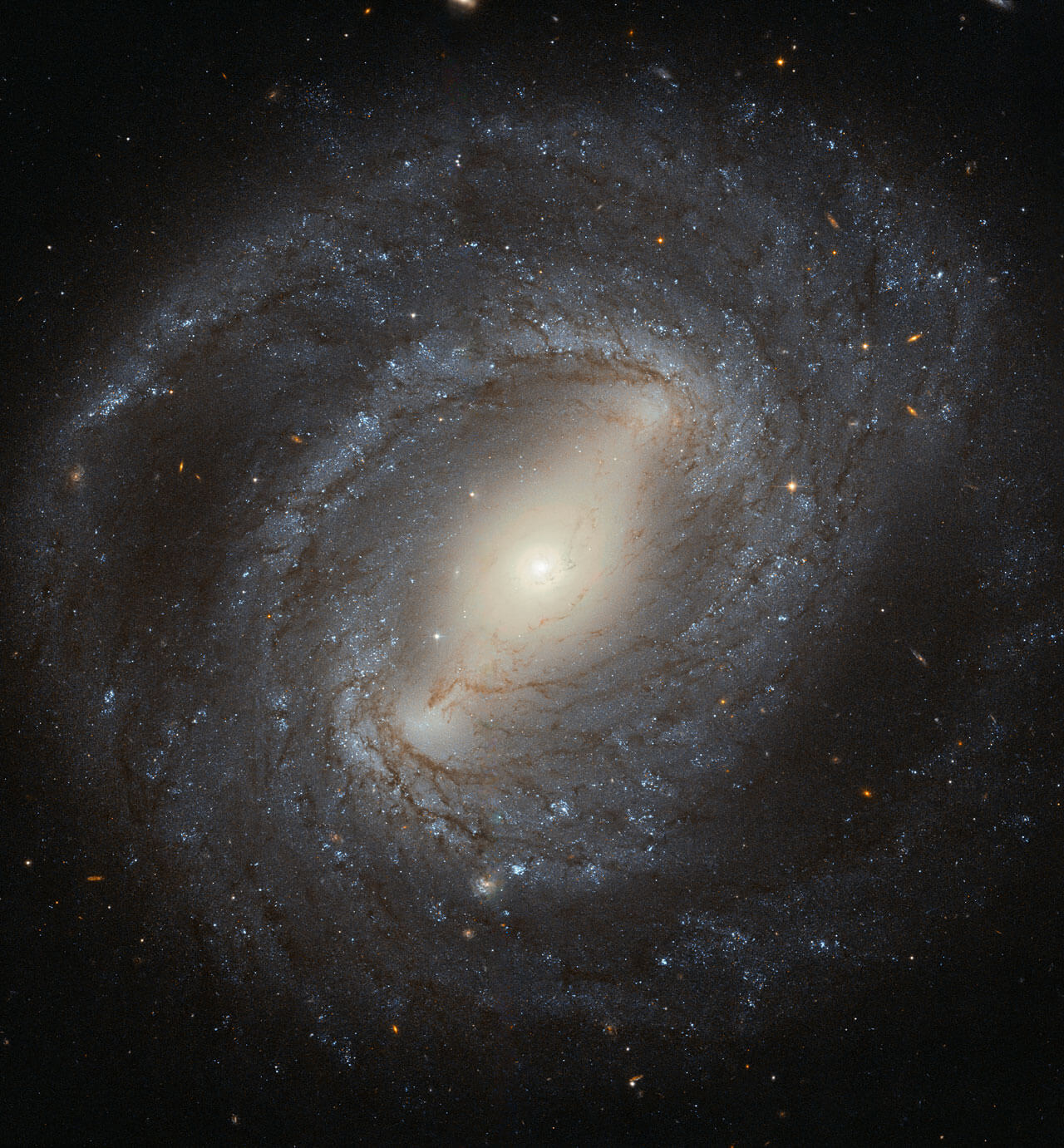
The arms of a spiral galaxy have lots of gas and dust, and they are often the areas where new stars are constantly forming.
In some cases, disc-shaped galaxies are observed with no trace of spiral arms. Hubble assumed these galaxies to be intermediate between spirals and ellipticals and designated them as S0 galaxies.
Sub-classification of Spiral Galaxy
Spiral galaxies are further sub-classified into six categories depending on how tightly their spiral arms are wound.
Hubble denoted the normal spirals by ‘S’ and the barred spirals by ‘SB’. Further, the subclasses belonging to each are represented by the lower case letters a, b, and c. Thus ‘Sa’ and ‘SBa’ are spirals and barred spirals respectively at one extreme, having large luminous nucleus and arms tightly coiled. On the other hand, ‘Sc’ and ‘SBc’ are those in the other extreme with small nuclei and loose extended spirals.
|
Galaxy Types |
Description |
|
Sa |
spiral galaxy, type a |
|
Sb |
spiral galaxy, type b |
|
Sc |
spiral galaxy, type c |
|
SBa |
barred spiral galaxy, type a |
|
SBb |
barred spiral galaxy, type b |
|
SBc |
barred spiral galaxy, type c |
Irregular Galaxy
Now those galaxies who do not have any distinct regular shape, unlike a spiral or an elliptical galaxy comes under irregular galaxy classification.
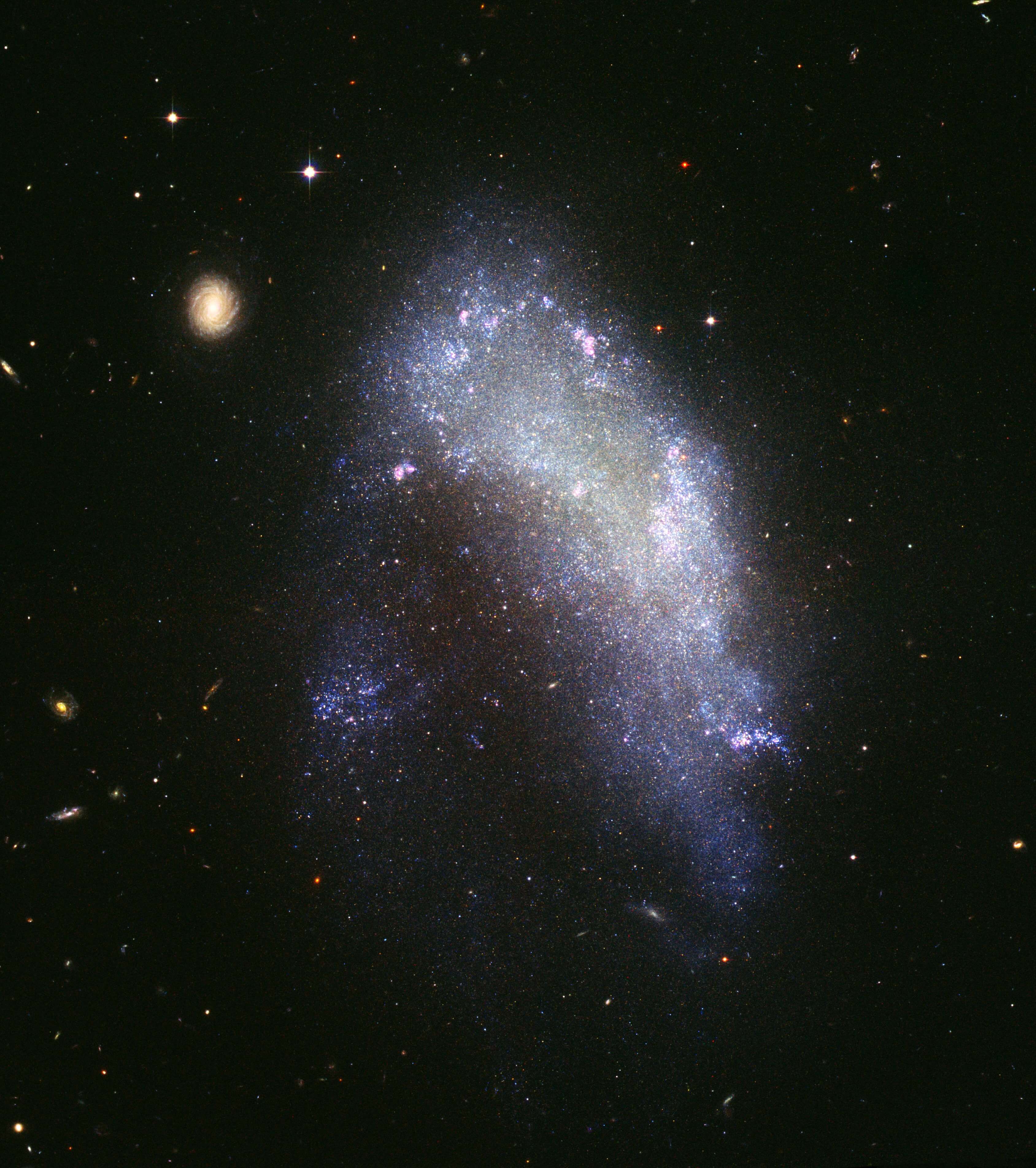
Among those galaxies found so far in the northern sky about 3% are classed as the irregular galaxies and have no traces of circular or rotational symmetry rather they have chaotic appearances.
Due to the diversity of objects that fits into this category, it is difficult to constrain sizes, masses, however, some calculations showed that dwarf irregulars can be as small as 3 kiloparsecs and contain as little as 108 solar masses of material whereas the larger irregulars can be up to 10 kiloparsecs across and contain 1010 solar masses of material.
The most known example of this kind of galaxy is the Large and Small Magellanic Clouds. Magellanic Clouds are our nearest pair of the galaxy, exactly saying, either of two satellite galaxies of the Milky Way Galaxy, the vast star system of which Earth is a minor component.
Irregular galaxies are further sub-divided into two classes; Irr I and Irr II galaxy (we may find an additional one sub-class of the irregular galaxy as dIrr indicating a dwarf irregular galaxy).
The first sub-class, Irr I, consists of a high number of stars and other stuff with some emission nebulae and appears blue. A large number of star clusters, variables, supergiants, and gaseous nebulae and also both population I and II stars are found in them.
The second type of irregular galaxy, named Irr II, is similar to the first type (Irr I) concerning symmetry but they show no resolution into stars or clusters.
There is another most accepted classification scheme, called the De Vaucouleurs galaxy classification, which is similar to Hubble’s galaxy classification but sub-divide differently and widely. The main clause of De Vaucouleurs classification is that Hubble’s two-dimensional classification of spiral galaxies - based on the tightness of the spiral arms and the presence or absence of a bar - did not adequately describe the full range of observed galaxy morphologies: the rings and lenses are important structural components of spiral galaxies.
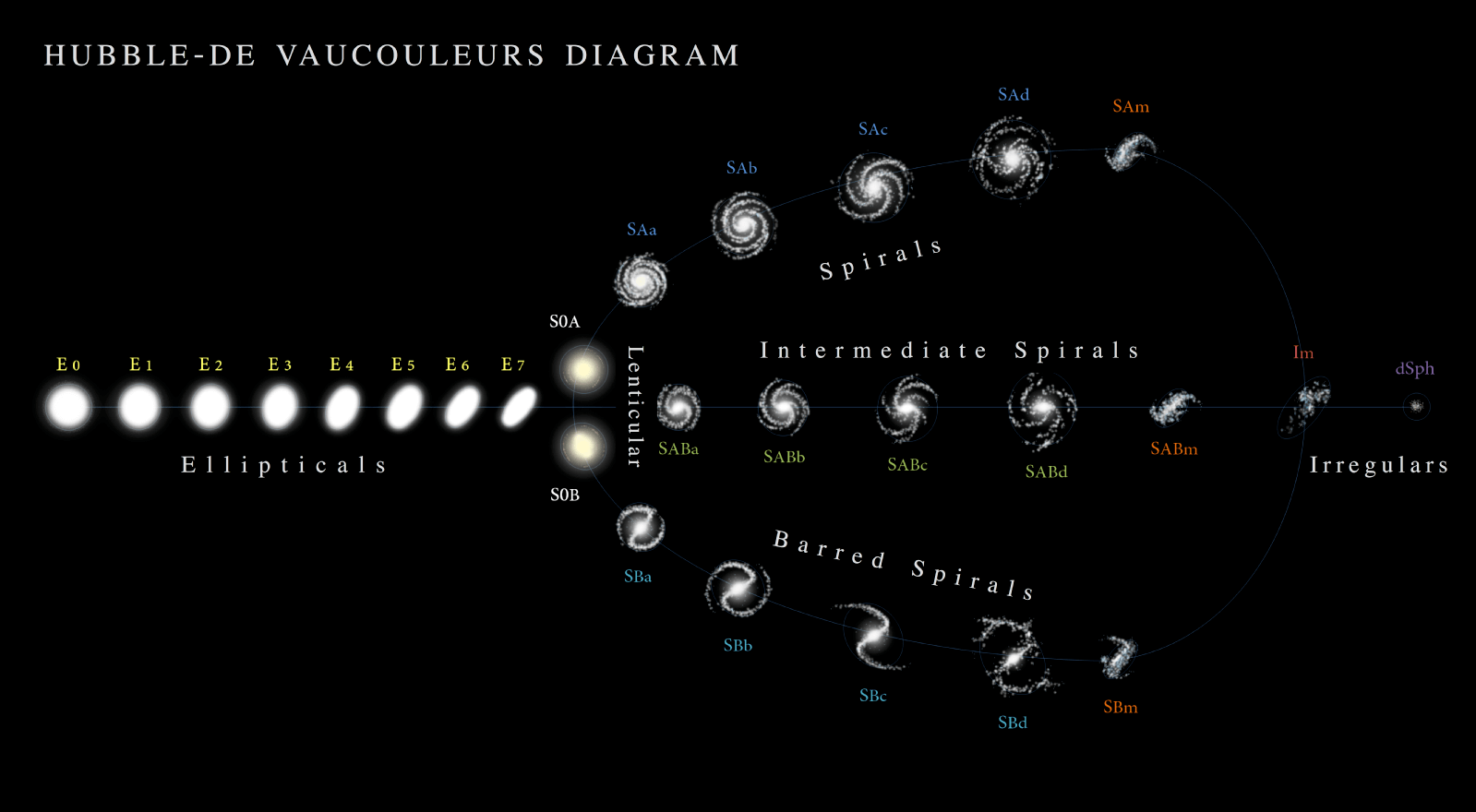
So on the corrected scheme de Vaucouleurs introduced a more elaborate classification system for spiral galaxies, based on three morphological characteristics; bars, rings, and spiral arms.
